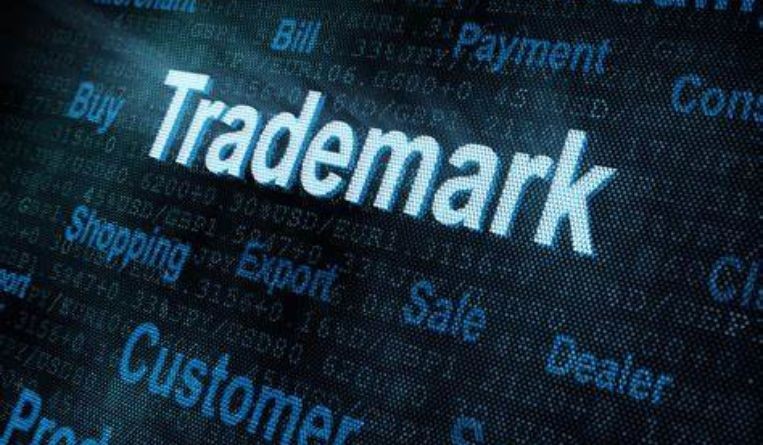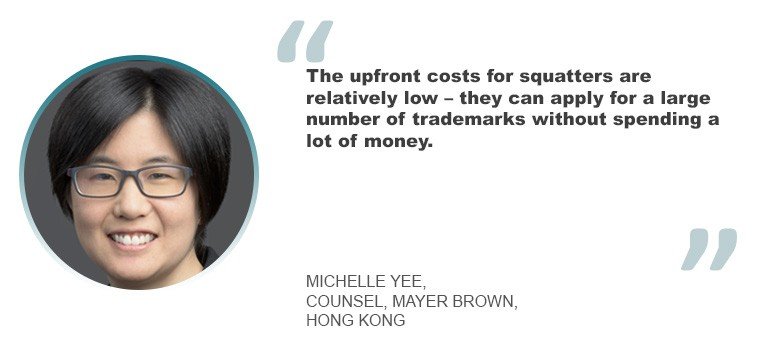International famous brands are often targets of trademark squatters, especially when the brands are well-known overseas but have yet to develop their official presence in China. According to Rieko Michishita, a partner at Bird & Bird in Beijing, it is not easy for brands from overseas to get back their trademark rights from squatters in China, mainly because of two reasons: the high demand for proof of bad faith registration, and the fact that trademark squatting has become an industry itself and developed new ways to bypass the related laws.
One widely applicable regulation is tackling trademark squatting is Article 44(1) in Trademark Law, which regulates registration by improper means, such as registering plenty of famous trademarks of others and accumulating trademarks. “Nevertheless, to apply this regulation, it often requires the proof that the trademark squatter submitted numerous registrations that obviously copy or imitate other famous trademarks. Thus, if the squatter submitted fewer registrations, there would be limitation in determining their ‘bad faith’, and require other strong evidence instead.”
Another applicable regulation is Article 13 in Trademark Law, which protects well-known trademarks. “To qualify as a well-known trademark, it is necessary for the right owner to provide a large amount of strong evidence proving their trademark has already been widely promoted and used in China for a long time and at a large scope before the trademark was registered by the squatter, and that the public has already been very familiar with their trademark. For most overseas brands, it is difficult to provide enough evidence that their fame in China has already reached the ‘well-known’ status. For businesses yet to enter the Chinese market, even if they are well-known in other countries, they might not prove the same ‘well-known’ status in the Chinese market.”
The third regulation quoted by Michishita is Article 32 of the trademark law, which prohibits the improper registration of trademarks that others have been using and have developed considerable influence. To apply this regulation, the right owner needs to not only prove the squatter’s “bad faith registration”, but also provide large amount of proof that they have prior use of the trademark on the same or similar products in China, as well as developed considerable influence. If the right owner has been focusing on the international market, and not yet developed their influence in their Chinese market, it would be difficult to provide enough proof to support the application of this article.
On the other hand, trademark squatters have also developed new strategies to avoid being identified as "bad faith registration”. According to Michishita, a trademark squatting agency might control several individual companies, or have registered several shell corporations overseas to register the trademarks, each registering for a limited number of trademarks ranging from several to dozens, and no more than 100 in general. Not all, but only a small number of the registrations are famous trademarks, as others are usually just simple word combinations to act as camouflage. By dividing the trademark applications to numerous applicants, the squatters avoid submitting large amount of trademark applications, making it more difficult for original right owners to collect evidence to prove their behavior of “bad faith registration”.
For international brands whose trademarks are registered and utilized by a third party before they enter the Chinese market, it is hard for them to invalidate the trademark on the basis of non-use for three consecutive years. Michishita suggested: “The major method is to request for declaration of invalidation. It is not impossible for the original owner to take back their trademark rights, and it is necessary to analyze comprehensively on the specific circumstances, such as the extent of substantial evidence of the squatter’s bad faith, the scale and range of the trademark use, the fame, duration, region and scope of use of the trademark of the original owner, whether there is any business collaboration between the squatter and the right owner, whether the original owner has claims on other prior rights (such as copyright, name right, name right of famous work) etc.” She said that these factors can affect the chances of getting back the trademark rights. “Anyway, regardless of the situation, once discovering their trademark are ‘squatted”, right owner should take action to restrict the unauthorized use by ways such as declaration of invalidation, non-use cancellation, or even negotiation for purchase.”
Not only famous brands would fall victim to trademark squatting, as sometimes lesser known, emerging brands might also become the prey of trademark squatters. Michishita pointed out that according to the trademark law in China, famous brands might find it easier to resolve trademark squatting issues than to less-famous brands. “For Articles 13 and 32 of the trademark law to be applicable, it is required that the right owner has considerable fame in China. The fame of the right owner would also affect the application of Article 44(1) of the trademark law. To some extent, the fame of the brand involved would affect whether a case is considered bad faith registration or trademark squatting. Well-known international brands might have more advantages than small brands as it is easier for them to collect the evidence proving their fame. But fame is not the only criteria to determine whether a case is trademark squatting, and is neither the only factor to determine whether a trademark right can be obtained. The bad faith extent of the squatter, and right basis of the right owner, etc. also affect the success rate in tackling trademark squatting.”
If businesses would like to protect themselves from trademark squatting, Zhu advised that it is always possible to file “defensive applications” targeting classes that surround the core businesses. “This is indeed the most cost-efficient way to prevent trademark squatting. Also, according to deliberations that took place in China before the promulgation of the final version of the amended trademark law, in particular concerning the new Article 4, the practice of defensive application should continue to be accepted as not being a ‘bad faith’ practice.” He also highly recommended a clearance search before filing and using a trademark in China, as it is preferable to take proactive actions to remove obstacles and ideally secure registration before any substantial commercialization.
Zhu said that when a trademark application is refused by the CNIPA on account of a prior trademark, it is highly recommended to investigate the cited trademark owner in order to find out whether it is a ‘squatter’ or a genuine trademark owner. “Bad faith filers in China can be highly sophisticated. For example, a trademark squatter may deliberately apply for a sign, which is relatively dissimilar to a prior registered trademark, so that it may remain unnoticed by the owner of such prior trademark, or that an opposition against such sign may fail, and the sign becomes registered. But then, in actual use, the newly registered trademark is (sometimes only slightly) transformed and amounts to an infringement upon the prior registered trademark. In such case, aggressive administrative raid actions and civil actions should be taken to contain the infringement relying on bad faith evidenced by the way in which the mark is actually used. This may eventually support the invalidation action against the disputed trademark.”
“The last point worth mentioning is that, sometimes, buying a mark may not be such a bad idea purely from the perspective of costs,” he said. “Depending on the strength and complexity of the case, the purchase price may be lower than the costs involved in a legal battle.”










